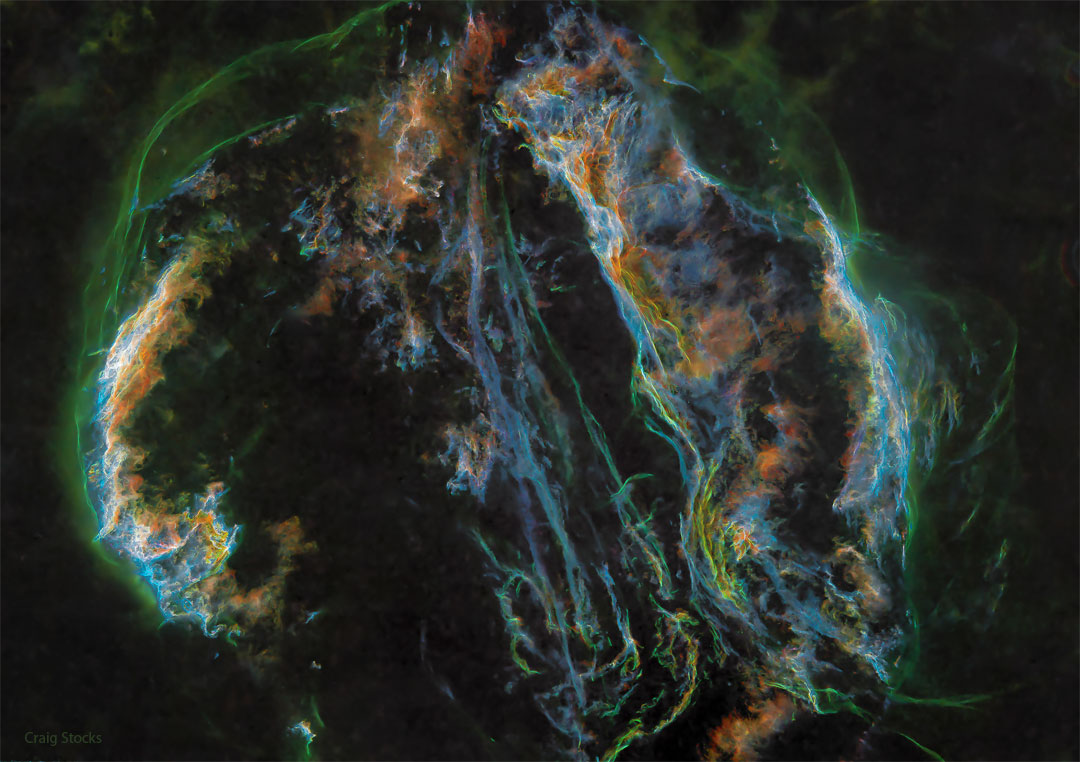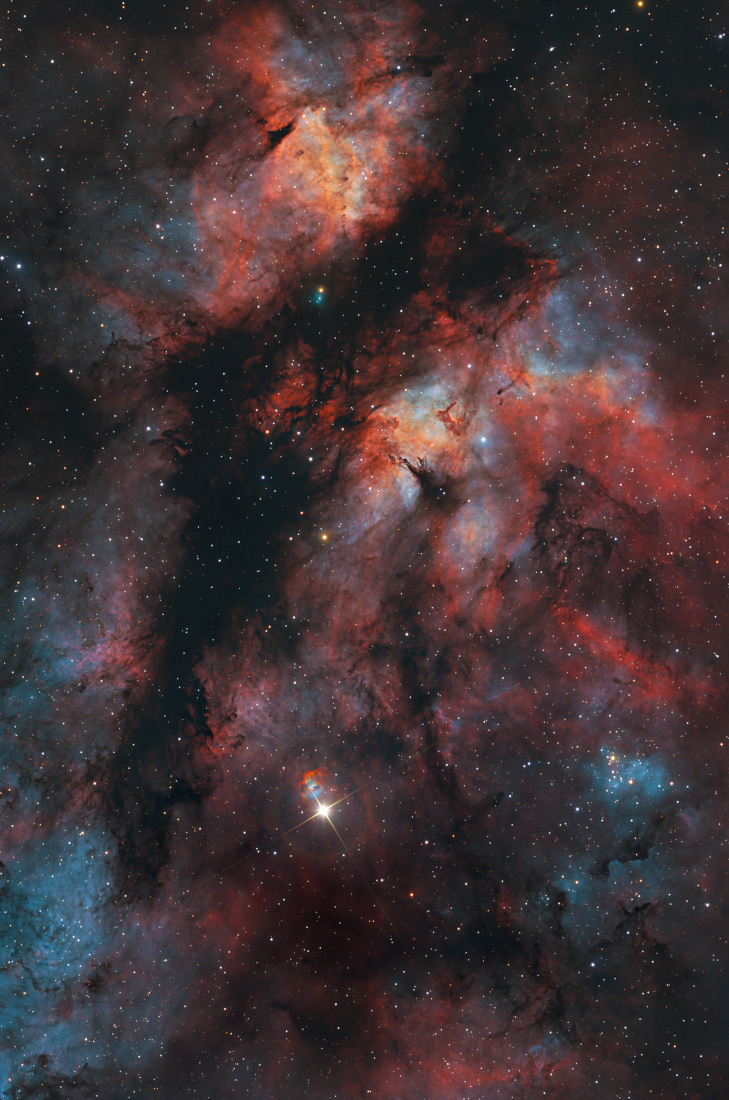2022 June 24
Image Credit & Copyright: Martin Wise
Explanation: A solar filament is an enormous stream of incandescent plasma suspended above the active surface of the Sun by looping magnetic fields. Seen against the solar disk it looks dark only because it's a little cooler, and so slightly dimmer, than the solar photosphere. Suspended above the solar limb the same structure looks bright when viewed against the blackness of space and is called a solar prominence. A filaprom would be both of course, a stream of magnetized plasma that crosses in front of the solar disk and extends beyond the Sun's edge. In this hydrogen-alpha close-up of the Sun captured on June 22, active region AR3038 is near the center of the frame. Active region AR3032 is seen at the far right, close to the Sun's western limb. As AR3032 is carried by rotation toward the Sun's visible edge, what was once a giant filament above it is now partly seen as a prominence, How big is AR3032's filaprom? For scale planet Earth is shown near the top right corner.










